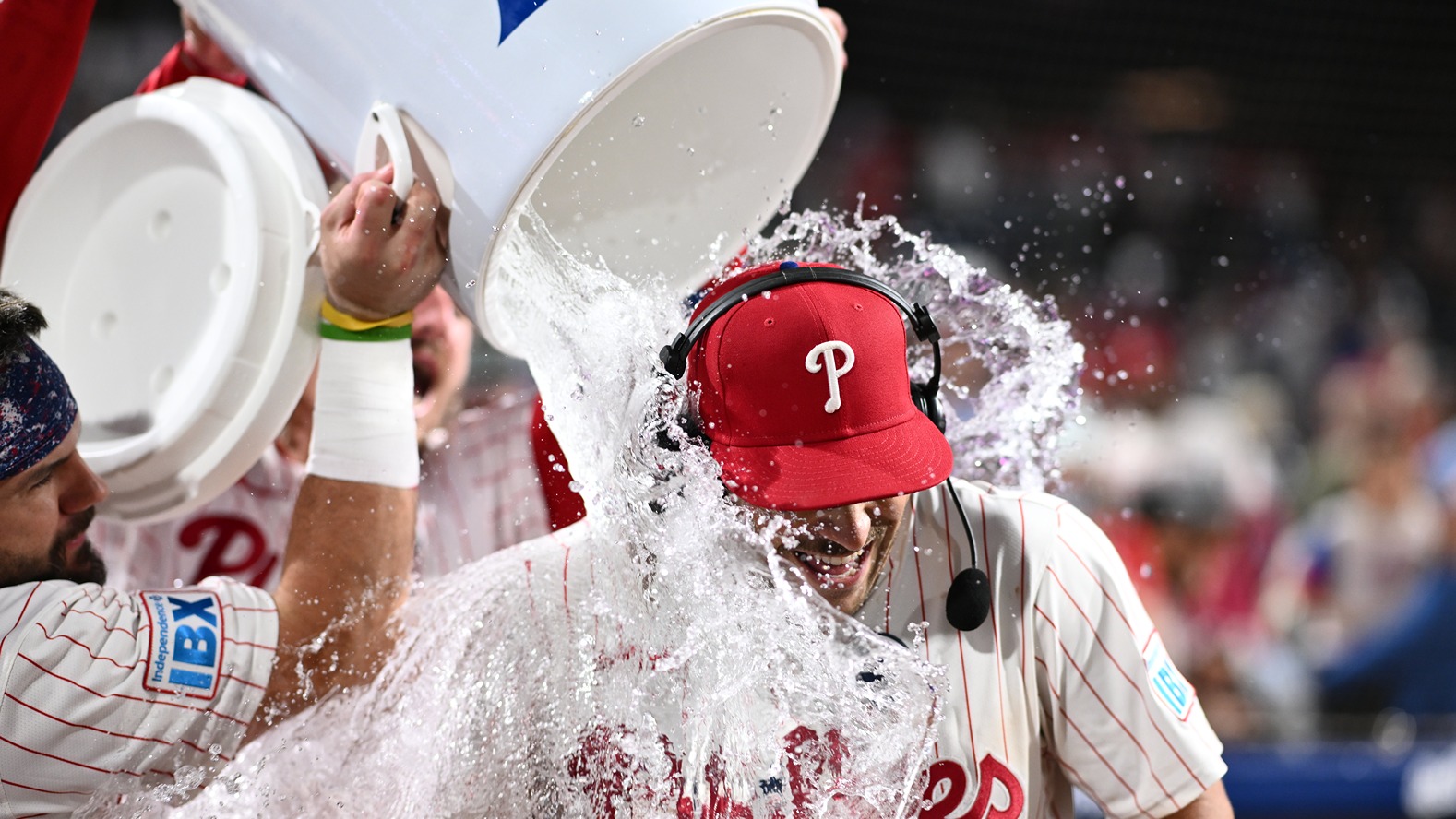The Phillies had a trade for a much-needed starting pitcher blow up Tuesday night because of medical concerns over one of the players in the deal.
How did this happen without a doctor physically laying his hands and eyes on the players involved in the proposed deal?
Well, there are steps that go into a trade.
With our All Access Daily newsletter, stay in the game with the latest updates on your beloved Philadelphia sports teams!
First, the baseball operations staffs from the teams involved agree on which players will be in the deal.
The trade could be consummated right there, but that would not be wise, not in this age of science, medicine and sophisticated record-keeping.
Teams need to know the health and injury history of the players they are acquiring and once a deal is agreed upon, they are given clearance to electronically access the players’ medical records through an MLB database.
These records go all the way back to when a player was in the minors. X-ray and MRI results can be accessed. Injury histories, treatment and rehab programs can be looked at. The results of spring training physicals and end-of-season physicals can be accessed. Pinpoint documentation of all medical issues is expected to be logged by team medical staffs and they are open for review by the medical staffs from other clubs when a trade gets into the red zone.
MLB
On Tuesday afternoon, the Phillies agreed to send minor-league catcher Abrahan Gutierrez and minor-league pitcher Cristian Hernandez to Pittsburgh for veteran lefty Tyler Anderson.
Phillies medical personnel electronically reviewed Anderson’s medical files and were good with what they saw.
The Pirates were OK with what they saw on Gutierrez, but they had reservations about something they saw involving Hernandez’ arm.
The deal was stalled and eventually it died when the Pirates thumbs-downed Hernandez.
Pittsburgh moved on and struck a deal that sent Anderson to Seattle for two minor leaguers.
The medical judgments that teams make in approving or rejecting trades are completely subjective. One team might dig into the records and see a shoulder that’s ready to blow up; another might see normal wear and tear and approve the deal. In the end, a team has to do what it feels is best for itself.
But the subjective nature of all this leads to some skepticism about the process. Suppose Team A agrees to a deal with Team B, pending a review of medical records. Team C sees the names being reported in the deal and decides it can beat Team B’s offer. The electronic review of medical records, and the subjective nature of it all, provides Team A with a vehicle to pivot out of its handshake deal with Team B if it wants to stop the deal or move in a different direction.
It’s a fascinating, albeit less than good faith, layer to the art of the deal.
Medical reviews are a lot different in free agency. Teams can electronically review a free agent’s medical history, but they can also do a clinical exam so there is more certainty in that process.
The ill-fated agreement between the Phillies and Pirates was rife with subplots that caught the eye of conspiracy theorists.
Pirates general manager Ben Cherington was pushed aside in Boston – and ultimately left on his own – when Dave Dombrowski, now leading the Phillies baseball operation, arrived there in 2015. Did Cherington whistle a high, hard one by Dombrowski's chin? More than one baseball person has wondered about that in the aftermath of Tuesday night’s failed deal.
Adding intrigue to it all is the fact that Cherington is close with Seattle GM Jerry DiPoto and hired him in Boston shortly before being pushed aside for Dombrowski. DiPoto ended up getting the pitcher Dombrowski wanted, and it all started with a review of the medical records and all the subjectivity that goes with it.
Subscribe to Phillies Talk: Apple Podcasts | Google Play | Spotify | Stitcher | Art19 | Watch on YouTube




